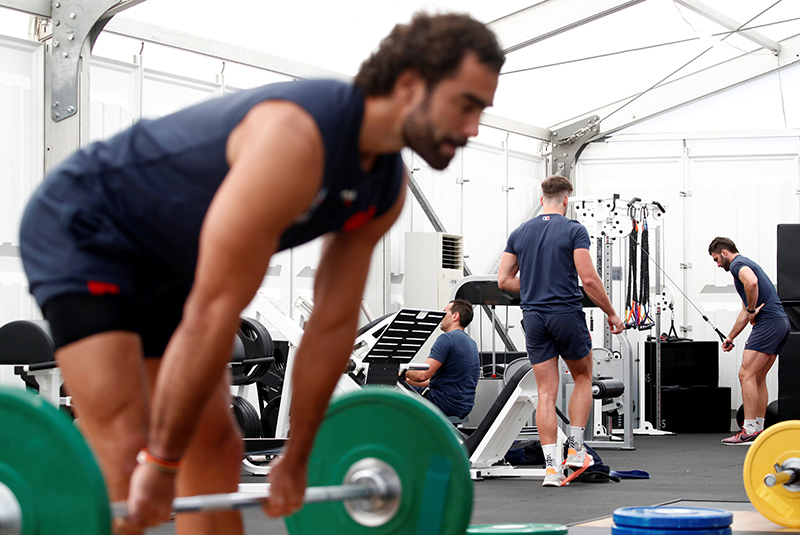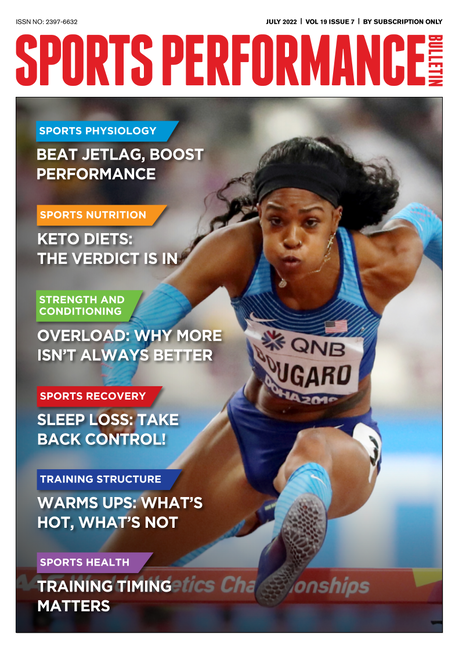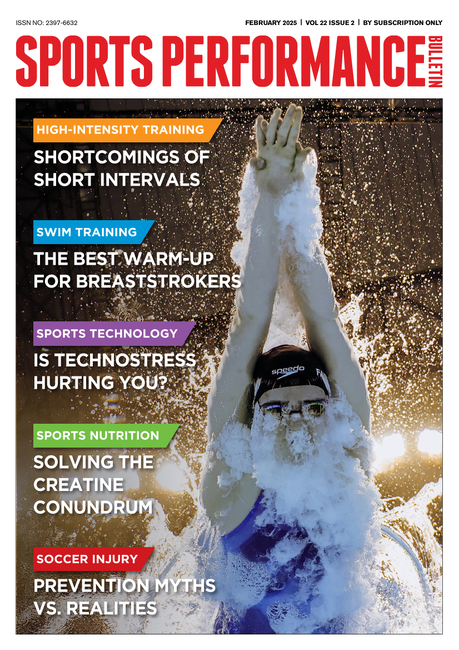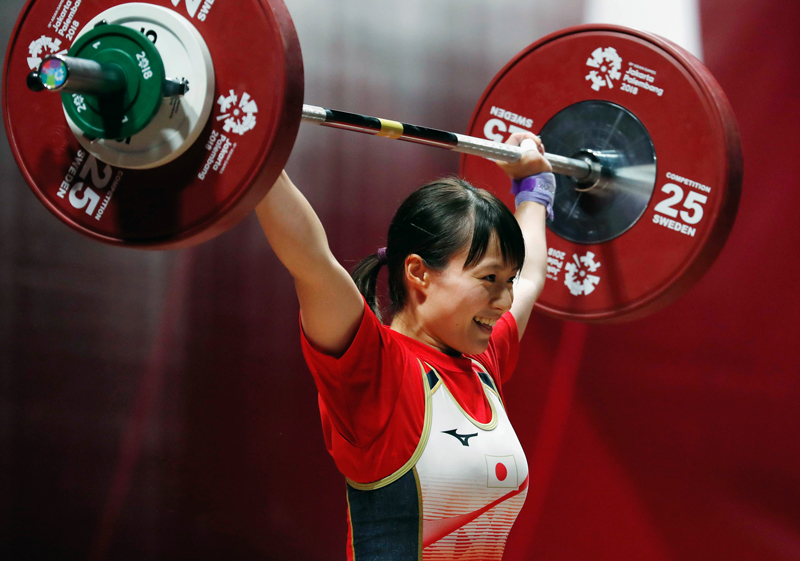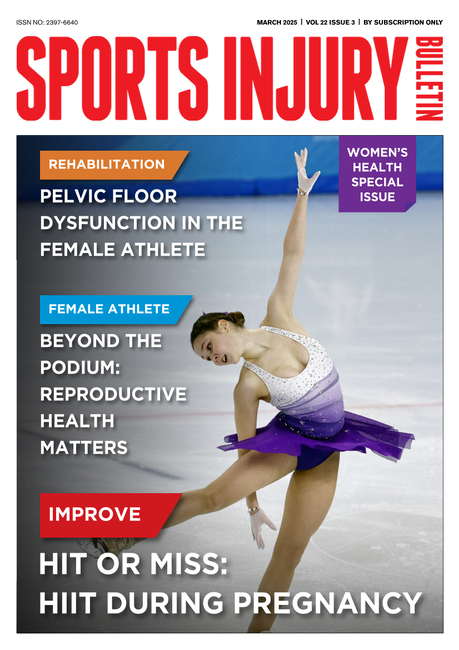You are viewing 1 of your 1 free articles. For unlimited access take a risk-free trial
Running training: is there a strength recipe that works?
Andrew Sheaff asks whether strength training really does benefit running performance, and looks at recent research on which kind of program is best. The results may surprise you!
Improving running performance has traditionally focused on endurance training. The longer, the harder and the faster, the better. This usually takes of the form of optimizing mileage, long runs, interval training, and training intensity distribution. And unsurprisingly, most of the work takes place in the form of running – and for good reason because this approach works and it works really well.
The reason this training approach is so successful is that it develops the metabolic characteristics necessary to run fast for extended distances. Successful runners have to produce a lot of energy over longer periods of time, and endurance training helps their body learn to do so. However, there are other factors that are critical to improving performance. Specifically, runners have to be able to create force quickly in order to generate the speed necessary to run fast. All the endurance in the world won’t do much good if a runner can’t generate any speed!
The importance of neuromuscular factors
Because of their focus on endurance training, many runners often ignore the neuromuscular factors that influence performance. They tend to ignore a powerful strategy for improving running performance, which is strength training. It seems counter-intuitive, but performing very short work periods at very high intensity can help runners improve their speed over middle- and long-distances. This has been confirmed anecdotally in the practice of successful runners as well as confirmed in the research.
However, there are different types of strength training that can be performed. While it’s clear that strength training can improve performance, what’s less clear is the impact of different types of resistance training. Are some more effective than others? Which should athletes use? Are there certain types of runners that benefit more or less from strength training? Can strength training have a negative impact on the metabolic performance factors? These are questions that require clear answers to guide how runners should train for optimal performance.
Recent research
An international group of researchers recently performed a systematic review and meta-analysis on the impact of strength training on performance in middle-distance and long-distance runners(1). The goal was to determine how different types of strength training impact running performance, and whether differences exist between different strength training strategies. The researchers included 38 studies in the analysis, with a total of 894 subjects: 298 of the subjects were highly-trained athletes, 272 were well trained, and 324 were moderately trained.
The researchers considered four different types of strength training:
- High load strength training was characterized by loads that were 80% of 1-rep max.
- Moderate load strength training was considered to be when the resistance was between 40-79% of maximum. Any type of strength training that focused on jumping exercises was labeled as plyometrics training.
- Mixed training was when these different strategies were combined to improve performance.
What they looked for
While strength training in general has been shown to improve performance in previous studies, it’s not clear why strength training positively impacts performance. Therefore, as part of the analysis, the researchers sought to determine whether any of the major determinants of performance are positively impacted by strength training. VO2max, a measure of aerobic capacity, was analyzed, as was vVO2max, which is the speed at which VO2max is achieved. The latter measure integrates both running speed and aerobic capacity. The researchers also looked at the impact of strength training on the maximal metabolic steady state, or the highest speed runners could achieve without accumulating metabolic waste products. Finally, sprint capacity, the ability to achieve very high speeds, was included in the analysis as well.
The researchers also investigated the impact of several different moderator variables. A moderator variable is a secondary variable that can influence the primary outcome. They wanted to know if the characteristics of the individual performing the training influenced the outcomes, as well as whether the characteristics of the intervention influenced performance outcomes. It’s possible that different types of runners may have a different response to strength training. Factors such as sex, age, body mass, height, strength training experience, performance level, and VO2max where investigated. Similarly, not all training interventions are the same, even if they include the same type of training. The analysis examined whether the number of sessions per week, the number of weeks the program lasted, or the total number of sessions influenced performance.
What they found
The most significant result of the meta-analysis was that overall, strength training positively improves performance. If your goal is to run fast over middle distances and long distances, including some sort of strength training will likely result in improved performance. However, it’s not just the strength training in general that will improve performance - the type of strength training performance matters as well.
The largest improvements in performance were seen when combined training was performed – ie when the subjects were performing a combination of high load resistance training, plyometric training, and in some cases, submaximal strength training (see figure 1). Therefore, rather than relying on one type of strength training, it’s likely best to use a combination of methods. The researchers hypothesized that using different types of strength training provides different types of overload to the neuromuscular system. This may result in complimentary adaptations that improve performance.
When looking at the individual strength training methods, it appears the heavy load strength training is the most effective (figure 1), leading to statistically significant improvements in performance. When performed individually, plyometric training also led to increases in performance. However, these effects fell just short of statistical significance. This result is somewhat surprising as it conflicts with previous findings. The researchers could not immediately explain this discrepancy beyond suggesting that the inclusion of more studies may explain the difference.
Figure 1: Effect of strength training types on running performance
A negative effect size represents beneficial effects after strength training compared with control conditions. The bigger the negative number, the more beneficial. CI = confidence interval; Combined = combination of high load training, plyometric training, and/or submaximal load training; HL = high load training; PL = plyometric training. Combined strength training was most effective while the single most effective type was high-load strength training.
Why the gains?
While strength training clearly has a positive impact on performance, the analysis was unable to determine why strength training improves performance. None of the strength training methods were shown to directly impact and improve sprint capacity, maximal metabolic steady state, VO2max, or vVO2max, the major determinants of middle distance and long-distance running performance.
While strength training is obviously positively impacting some aspect of performance and some bodily system, it’s not immediately clear what those systems are. From a practical standpoint, it doesn’t necessarily matter. If you know that strength does improve performance, and you know the types of strength training that are going to improve performance, you have the information you need to get better!
A common fear amongst endurance athletes is that strength training can negatively impact endurance qualities. However, strength training was shown to have no effect on the endurance qualities of maximal metabolic steady state, VO2max, and vVO2max. This means that while strength training didn’t positively affect these abilities, the fear that strength training will have a negative impact on endurance abilities is unfounded. Basic strength training can be performed with little risk of experiencing negative consequences on metabolic factors.
When it came to the moderating variables, none of the investigated variables had any impact on the degree to which strength training impacted performance. Put simply, regardless of the personal characteristics of the subjects themselves, or the duration and frequency of the training performed, the results were similar. While this may seem like a negative finding because no relationships were found, the opposite is true. What this means is that regardless of who you are, you can benefit from strength training. Further, you don’t have to worry about the specific details of your training program in terms of the frequency of sessions. If you’re performing combined strength training or heavy strength training in isolation with some consistency, you’re covered. That makes it a lot simpler to design an effective training program, which includes both strength training and running.
Practical applications for runners
If you want to run faster, strength training is a strategy that will help you do just that. While it may seem counterintuitive that very short bouts of high intensity work can improve endurance performance, the evidence is clear: both metabolic and neuromuscular abilities contribute to running performance. While traditional endurance training certainly improves metabolic factors, it falls short on the neuromuscular factors. That’s where strength training comes in as it adequately improves these important abilities. Importantly, it’s able to do so without compromising metabolic factors. If you’re worried that strength training is going to hurt your endurance, that’s not the case!
When it comes to performing strength training, you’re best performing training that combines high load training and plyometric training. The best results occur when both methods are used together. If you were forced to choose one over the other, it appears that high load training is the better option. But while the benefits of plyometric training didn’t quite meet the threshold for statistical significance, that doesn’t mean they’re useless. They still may improve performance. If you find them to be of value, keep them in the program and add a small amount of heavy load training to ensure you get optimal results.
Another important practical finding from the analysis was that anyone can improve their running performance with strength training. Who you are doesn’t matter - if you’re a runner, it can help! Furthermore, you don’t necessarily need to worry about the details in terms of implementing a program. The frequency of the sessions or the total number of sessions doesn’t appear to influence the results. Just focus on being consistent and you’ll reap the performance benefits of strength training.
References
1. Sports Med. 2024 Jul;54(7):1801-1833. doi: 10.1007/s40279-024-02018-z. Epub 2024 Apr 17.
Newsletter Sign Up
Testimonials
Dr. Alexandra Fandetti-Robin, Back & Body Chiropractic
Elspeth Cowell MSCh DpodM SRCh HCPC reg
William Hunter, Nuffield Health
Newsletter Sign Up
Coaches Testimonials
Dr. Alexandra Fandetti-Robin, Back & Body Chiropractic
Elspeth Cowell MSCh DpodM SRCh HCPC reg
William Hunter, Nuffield Health
Keep up with latest sports science research and apply it to maximize performance
Today you have the chance to join a group of athletes, and sports coaches/trainers who all have something special in common...
They use the latest research to improve performance for themselves and their clients - both athletes and sports teams - with help from global specialists in the fields of sports science, sports medicine and sports psychology.
They do this by reading Sports Performance Bulletin, an easy-to-digest but serious-minded journal dedicated to high performance sports. SPB offers a wealth of information and insight into the latest research, in an easily-accessible and understood format, along with a wealth of practical recommendations.
*includes 3 coaching manuals
Get Inspired
All the latest techniques and approaches
Sports Performance Bulletin helps dedicated endurance athletes improve their performance. Sense-checking the latest sports science research, and sourcing evidence and case studies to support findings, Sports Performance Bulletin turns proven insights into easily digestible practical advice. Supporting athletes, coaches and professionals who wish to ensure their guidance and programmes are kept right up to date and based on credible science.

